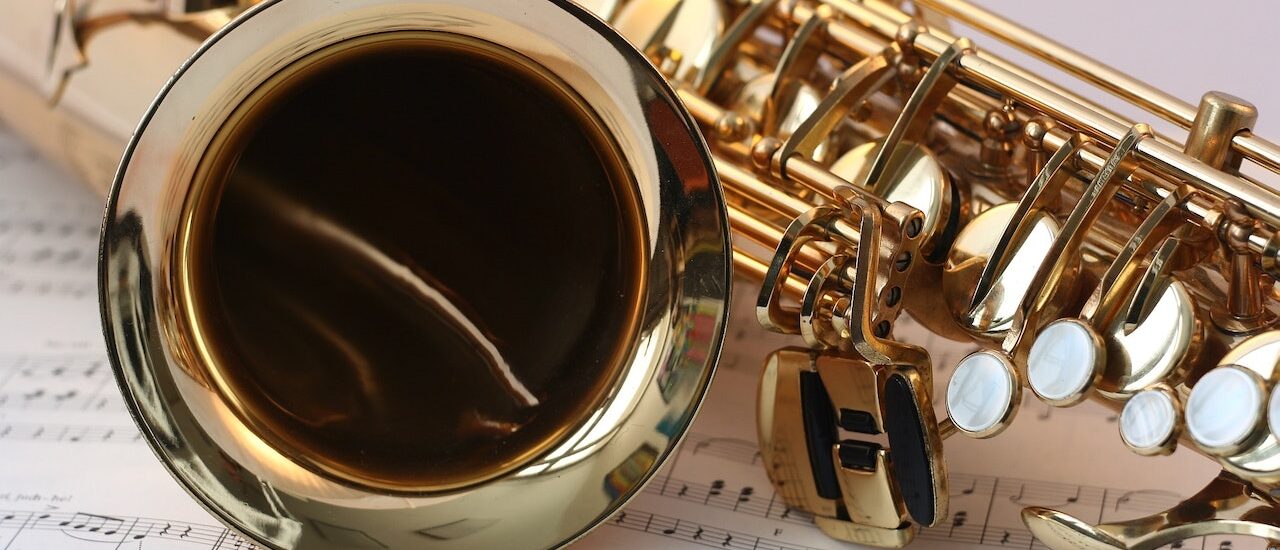Moving can be a daunting task, especially when it involves precious items like musical instruments. These aren’t just objects; they’re extensions of our souls, representing countless hours of practice, passion, and dedication. The very thought of a scratch or dent can send shivers down a musician’s spine.
But what if you had a guide, a roadmap, that ensures your beloved instruments remain untouched, unscathed, and in perfect harmony even after the move? With the rise in relocation needs, it’s essential to understand the intricacies of moving musical instruments.
Stride Movers, a trusted name in the moving industry, has witnessed firsthand the anxiety musicians face during relocations. Drawing from our vast experience, we present a comprehensive guide on how to move musical instruments without a scratch, ensuring they sing the same tune in your new abode.
Understanding Different Types of Musical Instruments
Musical instruments have been the soul of human expression for centuries. Their diverse range and unique characteristics allow for a myriad of sounds and melodies, each resonating with emotions and stories.
From the gentle strum of a guitar to the powerful beat of a drum, each instrument has its own identity and requires specific care. Let’s delve into the different types of musical instruments and their unique characteristics:
- String Instruments: These are characterized by strings that produce sound. Examples include violins, which are played with a bow, and guitars, which are typically plucked.
- Wind Instruments: Sound is produced by blowing air into these instruments. Flutes require a direct stream of air, while saxophones use reeds to create their distinctive sound.
- Percussion Instruments: These instruments produce sound when struck. Drums are a prime example, producing different tones based on their size and the material of their skin.
- Keyboards: Instruments like pianos and synthesizers fall into this category. They produce sound through keys that, when pressed, can either strike strings inside (as in pianos) or produce electronic tones (as in synthesizers).
- Brass Instruments: Not mentioned earlier, but these are wind instruments made of brass, like trumpets or trombones. They produce sound when the player buzzes their lips against the mouthpiece.
- Woodwind Instruments: A subset of wind instruments, these include clarinets and oboes, which use reeds to produce sound.
- Electronic Instruments: Modern additions to the musical world, these instruments, like electric guitars or digital keyboards, use electronic means to produce and amplify sound.
General Tips for Packing Musical Instruments
Moving musical instruments is not just about transporting items; it’s about preserving art, history, and personal sentiment. These instruments, often delicate and valuable, require special attention during relocation to ensure their safety and longevity. Here are some pivotal tips to consider when moving your cherished musical instruments:
- Climate Control: Instruments, especially wooden ones, are sensitive to humidity and temperature changes. Always ensure they’re transported in climate-controlled environments to prevent warping or cracking.
- Avoid Direct Sunlight: Prolonged exposure to sunlight can fade and damage instruments. Always store and transport them away from direct sunlight.
- Proper Packing Materials: Use high-quality packing materials that cushion and protect the instrument. Bubble wrap, foam inserts, and specialized cases can be invaluable.
- Loosen Strings: For string instruments, slightly loosen the strings to relieve tension and prevent any breakage during the move.
- Use Original Cases: If available, always use the instrument’s original case for transportation, as it’s designed specifically for its protection.
- Handle with Care: Always handle instruments with clean hands and ensure they’re lifted and carried securely, avoiding any abrupt movements.
- Seek Professional Help: For high-value or particularly delicate instruments, consider hiring professionals like Stride Movers, who have expertise in safely moving musical instruments.
Packing and Preparing Instruments for the Move
The process of moving musical instruments is akin to transporting delicate pieces of art. Each instrument, with its unique shape, size, and material, demands specific care and attention during the packing phase to ensure its safety.
Proper packing not only safeguards the instrument from potential damage but also ensures its longevity and performance post-move. As you prepare to relocate your cherished musical treasures, consider the following essential guidelines for packing and preparing them:
1. Detaching Removable Parts
Before packing, it’s crucial to detach any removable parts from the instrument. For instance, remove the mouthpiece from brass instruments, the bow from string instruments, or any external attachments. This not only makes the instrument more compact for packing but also reduces the risk of these parts getting damaged or causing damage to the main body.
2. Choosing Between Hard Cases and Soft Cases
The choice of case can significantly impact the safety of your instrument. Hard cases offer robust protection against physical impacts, making them ideal for fragile instruments or those being transported over long distances. Soft cases, while offering less protection, are lightweight and might be suitable for short-distance moves or as temporary solutions.
3. Utilizing Protective Materials
Bubble wrap, foam inserts, and other protective materials play a pivotal role in cushioning the instrument and absorbing any shocks during transportation. Ensure that the instrument is wrapped securely, with special attention given to protruding parts or areas that are particularly fragile.
4. Labeling and Marking Fragile Items
Clearly label all packed instruments with “Fragile” and “Handle with Care” notices. This alerts anyone handling the instrument about its delicate nature and ensures it’s treated with the necessary caution.
5. Sealing and Securing the Case
Once the instrument is packed, ensure that the case is securely sealed. For hard cases, ensure all latches are fastened. For soft cases, check that zippers or Velcro closures are properly closed. This prevents the instrument from accidentally falling out during the move.
6. Positioning in the Moving Vehicle
When placing the instrument in a moving vehicle, ensure it’s positioned in a way that it won’t move or shift during transit. Avoid placing heavy items on top of instrument cases. If possible, keep instruments away from the vehicle’s doors to reduce the risk of temperature fluctuations.
7. Regularly Check the Instrument During Long Moves
If you’re moving over a long distance, periodically check on your instrument, especially if there are significant temperature changes along the route. This allows you to make any necessary adjustments, such as repositioning the instrument or adjusting its protective coverings.
By meticulously following these guidelines, you can significantly reduce the risks associated with moving musical instruments and ensure they reach their destination in pristine condition.
Special Considerations for Pianos and Large Instruments
Pianos and other large instruments present unique challenges when it comes to relocation. Their sheer size, weight, and intricate construction mean that moving them isn’t just about physical strength but also about understanding their delicate nature.
The intricacies of these instruments, from the strings and hammers of a piano to the valves of a tuba, require careful handling to prevent any internal or external damage. Moreover, their weight can make them difficult to maneuver, especially in tight spaces or up and down stairs. This is where professional movers like Stride Movers come into play.
With their expertise, they not only bring the necessary manpower but also the knowledge of how to handle such instruments. Specialized equipment, such as piano dollies, is often employed to ensure the safe and smooth transportation of these hefty musical treasures. These tools distribute the instrument’s weight evenly and provide better control during movement, reducing the risk of accidents.
Insurance and Protecting Your Investment
Musical instruments often carry more than just monetary value; they hold sentimental value, memories, and sometimes even historical significance. Given their importance, ensuring their protection during a move becomes paramount. One of the primary ways to safeguard your investment is by having your instruments insured.
Comprehensive insurance coverage can provide peace of mind, knowing that should any damage occur during transit, the costs of repair or replacement will be covered. However, insurance isn’t just about post-move claims. Before the move, it’s crucial to document the condition of each instrument meticulously.
Taking photographs, noting any existing damages, and keeping a record of the instrument’s age and any modifications can be invaluable. This documentation serves as a baseline, ensuring that any claims made post-move are backed by solid evidence, making the process smoother and more straightforward.
Unpacking and Setting Up Instruments Post-Move
The journey of relocating musical instruments doesn’t end once they’ve reached their destination. The post-move phase is equally critical, ensuring that these delicate items are reintroduced to their new environment in a manner that preserves their integrity and sound quality.
Proper unpacking and setup can make the difference between an instrument that continues to perform at its best and one that faces potential issues. Here are some pivotal steps to consider during this phase:
- Acclimatization: Before unpacking, give instruments time to acclimate to their new environment, especially if there’s a significant difference in temperature or humidity. This helps prevent sudden shocks that could damage the instrument.
- Careful Unpacking: Remove instruments gently from their packaging, ensuring that no parts get snagged or pulled inadvertently.
- Reassembly: For instruments that were disassembled for the move, carefully put them back together, following any manufacturer’s guidelines or professional advice.
- Tuning: Instruments, especially stringed ones, may go out of tune during the move. Once they’ve acclimated, take the time to tune them to ensure optimal sound quality.
- Damage Inspection: Thoroughly inspect each instrument for any potential damage or issues that might have occurred during the move. Look for scratches, dents, or any irregularities in sound.
- Clean and Polish: After the move, it’s a good idea to clean and polish your instruments, removing any dust or residues from the packing materials.
- Seek Professional Assistance: If you’re unsure about the condition of an instrument post-move or need help with tuning or reassembly, consider seeking help from a professional or technician familiar with that specific instrument.
By following these steps, you can ensure that your musical instruments transition smoothly into their new home, ready to provide beautiful melodies for years to come.
Why Choose Stride Movers for Your Musical Instrument Relocation Needs
Relocating musical instruments is not just about physical transportation; it’s a delicate art that requires precision, care and a deep understanding of the unique nature of each instrument.
Stride Movers, with its rich history of successful relocations and a team of dedicated professionals, stands out as the go-to choice for those seeking to move their cherished musical treasures. Here’s why Stride Movers should be at the top of your list when considering musical instrument relocation:
1. Unmatched Expertise
Stride Movers boasts a team with unparalleled expertise in handling delicate items. Our experience spans across various musical instruments, from the intricate structures of string instruments to the robust builds of percussion tools. This expertise ensures that each instrument is treated with the respect and care it deserves.
2. Specialized Training
Our professionals aren’t just movers; they’re trained specifically in the intricacies of moving musical instruments. They understand the unique challenges posed by each instrument type and are equipped with the knowledge to address these challenges effectively.
3. Comprehensive Services
Stride Movers offers a holistic approach to instrument relocation. From initial packing, using the best materials, to unpacking at the destination, every step is meticulously planned and executed.
4. Storage Solutions
Beyond just moving, Stride Movers provides top-notch storage solutions. Whether you need short-term storage while settling in or long-term solutions, our climate-controlled facilities ensure your instruments remain in pristine condition.
5. Client-Centric Approach
At Stride Movers, the client’s needs are paramount. We tailor our services to meet individual requirements, ensuring a personalized moving experience that caters to the specific needs of each musical instrument.
6. Safety Protocols
We employ stringent safety protocols, ensuring that instruments are not only protected from physical damage but also from factors like humidity and temperature fluctuations, which can adversely affect their performance.
7. Competitive Pricing
Quality doesn’t always have to come at a premium. Stride Movers offers its exceptional services at competitive prices, ensuring that clients receive the best value for their money.
In essence, choosing Stride Movers for your musical instrument relocation needs is opting for peace of mind. With our dedicated team, state-of-the-art equipment, and unwavering commitment to excellence, your instruments are in the safest hands, ensuring they reach their destination ready to resonate with the melodies of their new home.
Conclusion
The journey of relocating musical instruments is one that demands meticulous attention to detail and an unwavering commitment to preserving their integrity. Proper handling and care are not mere suggestions but necessities to ensure the longevity and performance of these cherished items.
While the task may seem daunting, seeking professional assistance can transform this challenge into a seamless experience. Stride Movers, with its team of experts and a track record of excellence, stands ready to assist.
We invite you to reach out to us for all your moving needs, especially when it involves the delicate art of transporting precious musical instruments. Let us be the trusted hands that carry your melodies to their new home.
FAQs
While it’s generally a good idea to slightly loosen the strings to relieve tension, our team can guide you on the best practices specific to your instrument.
Yes, we provide climate-controlled transportation options to ensure the safety and integrity of instruments sensitive to temperature and humidity changes.
No worries! Stride Movers has a range of packing materials and cases suitable for various instruments, ensuring their protection during the move.
Absolutely! We offer comprehensive international moving services, ensuring your instruments are safely transported across borders.
Our team employs a combination of expert training, specialized equipment, and high-quality packing materials to minimize the risk of damage. Each instrument is handled with utmost care and precision throughout the moving process.




